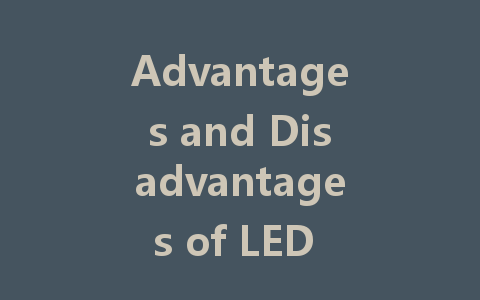
In recent years, LED displays have become increasingly popular across various applications, from advertising billboards to personal gadgets like alarm clocks and televisions. These vibrant and highly efficient displays have transformed how we consume information and entertainment. However, like any technology, they come with their set of advantages and disadvantages. In this article, we’ll explore both sides to help you understand whether LED displays are the right choice for your needs.
What is an LED Display?
An LED (Light Emitting Diode) display utilizes semiconductor technology to produce images and video. Unlike traditional displays that utilize cathode ray tubes (CRT) or even LCDs (Liquid Crystal Displays), LED displays emit light directly, resulting in brighter and more dynamic visuals. This technology is used in a variety of settings, from large outdoor advertising screens to compact devices like smartphones and clocks.
Advantages of LED Displays
One of the most significant advantages of LED displays is their energy efficiency. LEDs consume far less power than traditional display technologies. According to the U.S. Department of Energy, LED displays can be up to 80% more efficient than conventional lighting options. This not only reduces electricity costs but also contributes to a smaller carbon footprint.
LED displays shine brightly, making them particularly effective for outdoor advertising and signage. Their high lumens per watt ratio allows them to be clearly visible even in bright sunlight. This feature is vital for businesses looking to attract customers and convey information effectively.
LED technology is known for its durability. An LED display typically lasts between 50,000 to 100,000 hours compared to traditional options that may last only a few thousand hours. This longevity means fewer replacements, saving consumers and businesses money over the long term.
Given their durability and long lifespan, LED displays require less frequent maintenance than other types of displays. This is particularly beneficial for businesses that want to avoid frequent repairs and downtime.
LED displays are incredibly versatile and can be used in various applications, from billboards and sports arenas to portable displays and home entertainment systems. Their adaptability has led to widespread adoption across different industries.
Disadvantages of LED Displays
One of the most notable downsides to LED displays is the initial cost. While prices have dropped over the years, LED technology can still be more expensive upfront compared to traditional display options. For individuals or small businesses operating on tight budgets, this may pose a barrier to entry.
Although LED displays offer excellent brightness, image quality can be variable, especially in lower-end models. Issues like color distortion and poor viewing angles can arise. It’s essential to choose quality brands and products to ensure optimal performance.
While LED displays are energy-efficient, they do contain materials that raise environmental concerns at their end of life. Proper disposal and recycling of LED displays are crucial to mitigate their impact on the environment. Some manufacturers are actively working on sustainability initiatives, but consumers should remain vigilant.
Some LED displays may experience flickering, an issue that can cause eye strain and discomfort for viewers. While this is often minimized in quality products, it’s something to be aware of, especially when considering displays for long-term use.
While LED displays are better in terms of brightness, they may sometimes have a limited color range compared to OLED (Organic Light Emitting Diode) displays. For applications requiring high color accuracy, this could be a consideration.
Conclusion
LED displays present a compelling blend of benefits and drawbacks. Their energy efficiency, brightness, longevity, and versatility make them an excellent choice for a wide variety of applications. However, concerns such as initial costs, image quality variability, and environmental impacts cannot be overlooked.
When considering whether to invest in LED technology, it’s essential to weigh these factors against your specific needs and circumstances. By understanding both the advantages and disadvantages, you can make a more informed choice that aligns with your goals, whether for personal use or business applications. As technology continues to advance, the balance of pros and cons may shift, emphasizing the importance of staying updated on the latest developments in display technology.